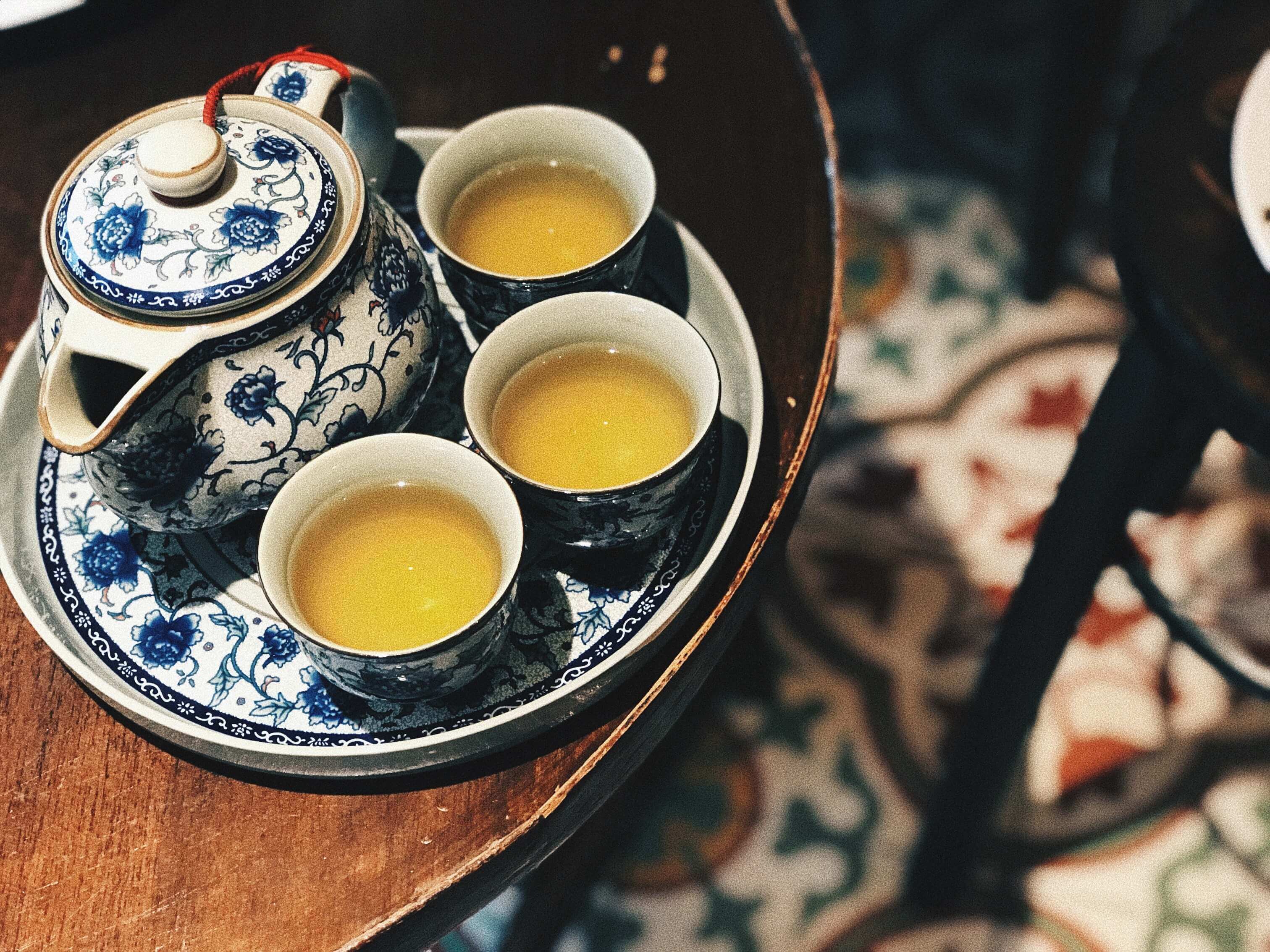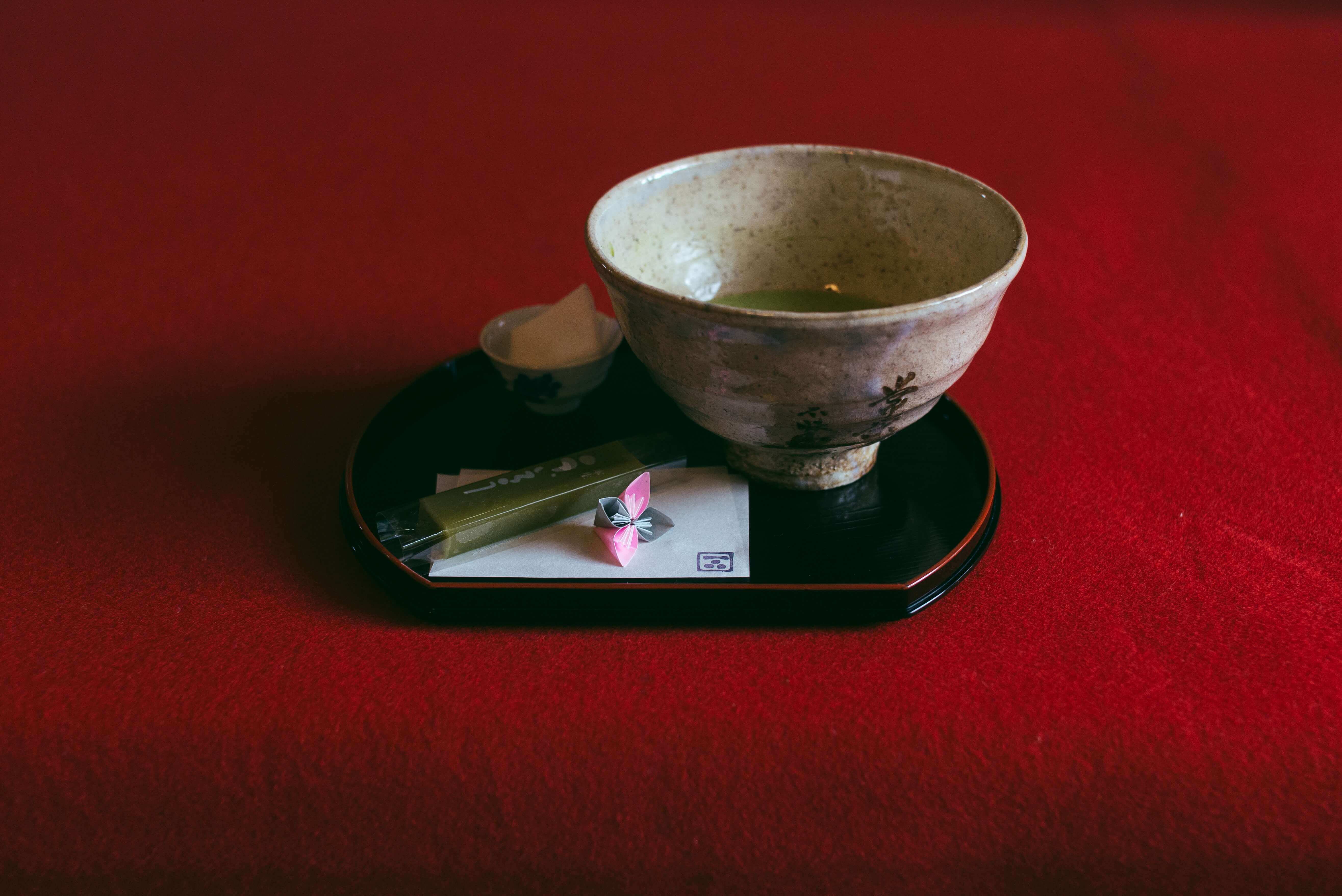Since around the 9th Century, when tea was first introduced to the people of Japan by traders who sipped the beverage in China, green tea has evolved into a national obsession and become part of the country’s culture. Keep reading to learn more about the history of this magical drink.

Contents
A Plant grown in China crosses The Sea of Japan
Long before Genghis Khan and Mongol hordes began expansive explorations into China, its people had become a tea-drinking culture. Green tea, specifically, was given magical powers. Those drinking it expected health and welfare benefits. In some parts of 8th Century China, green tea was called “an elixir of youth.”
China wasn’t to keep this healthy beverage all to itself. Traders began transporting leaves and plants the short distance to Japan. Despite rudimentary communications systems, it took next to no time for the people of Japan to fall in love and make green tea drinking more than a pleasurable habit, but a ceremonial one as well.

From herbal medicine to everyday drink
As tea preparation and consumption became commonplace in Japan, its reputation for having medicinal purposes grew to the point the growing process was often shrouded in mystery so cultivation methods could be limited to the rich and entitled. But during China’s Tang Dynasty, green tea had gone mainstream and while this transformation took longer to reach Japan, a declaration by Emperor Saga, who ruled from 786 to 842, made tea-drinking available to even the lowest class of society.
Perhaps the most enthusiastic proponents of green tea drinking were Buddhist monks, some of whom had become tea drinkers during pilgrimages to China. Eventually, green tea cultivation and propagation attracted two leading proponents of Japanese tea consumption: Kukai and Saicho, Buddhist monks who became legends thanks to huge numbers of tea seeds they brought home each time they visited China.

A green tea empire!
Having become the most popular drink in Japan thanks to the efforts of these two monks, tea growing had become commonplace as the 9th century came to a conclusion. By this time, it was grown in so many places, visitors to Japan’s imperial palace found themselves walking between rows of tea plants on their way to see the emperor. Zen Buddhist monks, meanwhile, used green tea to help them stay alert longer during lengthy meditation practices and only droughts brought this flourishing agricultural movement to the occasional stop.
By the 12th Century, and thanks to Zen master Eisai, called the father of the Japanese tea culture, this steeped beverage had become the nation’s most-favored beverage. Eisai recognized in tea a plant with the potential to do more than just quench thirst. He began to attribute myriad powers to green tea which prompted poets to publish tributes to green tea’s ability to be a transformative beverage.

From beverage to cultural icon
Green tea’s importance to Japanese culture can’t be understated. Used ceremoniously by monks, healers and even employed in matters of justice during Kugatachi divination ceremonies staged to determine whether someone was guilty or innocent, the accused was required to remove stones from pots filled with boiling tea or water.
Not every ritual associated with tea was draconian: tea competitions became a major part of samurai warrior training and students drank it before going into battle, too. Ornate tea houses built by wealthy homeowners to stage lavish ceremonies became status symbols. By the 16th Century, cups crafted explicitly for green tea ceremonies were brought from China to Japan, helping to launch the nation’s ceramics industry.

The inevitability of worldwide acceptance
Anthropologists with deep understanding of Japanese cultural practices often point to the nation’s propensity for remaining a closed society for centuries, but green tea helped introduce the nation to the world once Japan’s Edo Period dawned. Between 1600 and the mid-1800s, exports of green tea flourished and helped introduce the rest of the world to Japan.
Green tea is now the most consumed beverage in Japan next to water. Japan ranks as the 10th country exporting tea to the world with 1.7% of the total global tea export by volume.
—————————————–
Author: Kei Nishida
CEO Japanese Green Tea In, Author of Book – Cook With Matcha
https://www.JapaneseGreenTeaIn.com
Kei Nishida is a Japanese green tea enthusiast, a writer, and the founder and CEO of Japanese Green Tea Company. His passion for introducing America to the tea of his homeland was the catalyst for creating the only company that brings high-quality tea from Arahataen Green Tea Farms to the rest of the world.
Green Tea and Matcha from Japanese Green Tea Company won the Global Tea Championship in 2017 and 2018 and was the #1 Best Selling Green Tea in Japan online through Rakuten Inc. in 2016 and 2017.
If you would like to try Award-Winning Japanese Green Tea, please use coupon code AIRKITCHEN to get 10% off of your first order at https://www.JapaneseGreenTeaIn.com.
